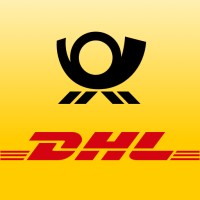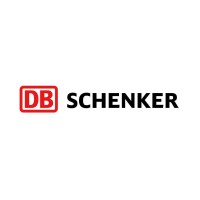
Deutsche Post und DHL Company Cyber Security Posture
deutschepost.deDeutsche Post delivers mail and parcels in Germany. It is an expert provider of dialogue marketing and press distribution services as well as corporate communications solutions. We operate a nationwide transport and delivery network in Germany. We also deliver mail across borders, serve the domestic markets of countries outside of Germany and also provide special services beyond mail transport. We serve business customers in key domestic mail markets, including the USA, the Netherlands, the UK, Spain.
DPUD Company Details
deutsche-post-und-dhl
10040 employees
114502.0
none
Transportation, Logistics, Supply Chain and Storage
deutschepost.de
Scan still pending
DEU_1057482
In-progress
Between 200 and 800
This score is AI-generated and less favored by cyber insurers, who prefer the TPRM score.
 DPUD Global Score
DPUD Global Score.png)

Deutsche Post und DHL Company Scoring based on AI Models
| Model Name | Date | Description | Current Score Difference | Score |
|---|---|---|---|---|
| AVERAGE-Industry | 03-12-2025 | This score represents the average cybersecurity rating of companies already scanned within the same industry. It provides a benchmark to compare an individual company's security posture against its industry peers. | N/A | Between 200 and 800 |
Deutsche Post und DHL Company Cyber Security News & History
| Entity | Type | Severity | Impact | Seen | Url ID | Details | View |
|---|
Deutsche Post und DHL Company Subsidiaries

Deutsche Post delivers mail and parcels in Germany. It is an expert provider of dialogue marketing and press distribution services as well as corporate communications solutions. We operate a nationwide transport and delivery network in Germany. We also deliver mail across borders, serve the domestic markets of countries outside of Germany and also provide special services beyond mail transport. We serve business customers in key domestic mail markets, including the USA, the Netherlands, the UK, Spain.
Access Data Using Our API

Get company history
.png)
DPUD Cyber Security News
Cybersecurity jobs available right now: July 1, 2025
Here are the worldwide cybersecurity job openings available as of July 1, 2025, including on-site, hybrid, and remote roles.
DHL Replaces Microsoft as Most Imitated Brand in Phishing Attempts in Q4 2021
The attacker was trying to lure the victim to click on a malicious link (http://reg[.]chaindaohang[.]com/wp-content/uploads/2021/07/dhl/index[.]php?i=i&0= ...
Discovery, decisions, delivery and data: The digital economy’s key long-term drivers
Original Content: AXA IM. The coronavirus pandemic has rapidly accelerated the digitalisation of the global economy. Lockdowns meant adapting to ...
Understanding Computer Vision
Computer vision technology can be used to optimize many processes in logistics. Find out more about computer vision applications in this field.
The abrupt shift to remote working has amplified cyber security problems - LSE Business Review
The sudden shift to remote work has massively amplified the problem of protecting proprietary information.
Transforming Operational Procurement with Deutsche Post DHL
Capgemini's technologies, process enhancements and outsourcing capabilities are swiftly improving Deutsche Post DHL's performance in operational ...
SWOT ANALYSIS OF DHL (Updated [year])
DHL is a cargo shipping company that relies heavily on consistent weather for everyday tasks. A rise in the frequency of extreme weather events ...

DPUD Similar Companies

DB Schenker
At DB Schenker, we're not just about logistics; we're about understanding what truly matters to you. As a global leader in transportation and logistics, we're dedicated to supporting industries and businesses worldwide in the seamless exchange of goods. Our integrated approach ensures that every ste

Österreichische Post AG
Die Österreichische Post AG ist ein international tätiger Post-, Logistik- und Dienstleistungskonzern mit herausragender Bedeutung für Österreich. Konzernweit erwirtschaftete die Post im Jahr 2024 mit ihren rund 28.000 Mitarbeiter*innen einen Jahresumsatz von über 3,1 Mrd EUR. In Österreich umfasst

KTZ Express
KTZ Express JSC multimodal company is a sales center of cargo transportation and logistics services for “Kazakhstan Railways” JSC National Company. KTZ Express provides a full range of transport and logistics services in all types of transportation on all routes, integrates transportation by rail, s

Arvato
𝗪𝗲 𝘀𝗵𝗮𝗽𝗲 𝘀𝘂𝗽𝗽𝗹𝘆 𝗰𝗵𝗮𝗶𝗻𝘀 𝗴𝗹𝗼𝗯𝗮𝗹𝗹𝘆 Logistics seems so simple – just goods in, goods out. For us there is so much more to it. By combining deep industry expertise with the right technologies, we develop innovative supply chain management and e-commerce solutions for our clients. We have aligned our o

A.P. Moller - Maersk
A.P. Moller - Maersk is an integrated transport and logistics company; going all the way, together, for our customers and society. ALL THE WAY is our commitment to connect the world so that everyone has both the possibility and the ability to trade, grow and thrive. The company employs roughly 110.0

PostNord Sverige
We deliver. PostNord is the leading supplier of communications and logistics solutions to, from and within the Nordic region. We also ensure the postal service to households and businesses in Sweden and Denmark. With our expertise and a strong distribution network, we develop options for tomorro

Frequently Asked Questions
Explore insights on cybersecurity incidents, risk posture, and Rankiteo's assessments.
DPUD CyberSecurity History Information
How many cyber incidents has DPUD faced?
Total Incidents: According to Rankiteo, DPUD has faced 0 incidents in the past.
What types of cybersecurity incidents have occurred at DPUD?
Incident Types: The types of cybersecurity incidents that have occurred include .
Incident Details
What are the most common types of attacks the company has faced?
Additional Questions
What Do We Measure?
















Every week, Rankiteo analyzes billions of signals to give organizations a sharper, faster view of emerging risks. With deeper, more actionable intelligence at their fingertips, security teams can outpace threat actors, respond instantly to Zero-Day attacks, and dramatically shrink their risk exposure window.
These are some of the factors we use to calculate the overall score:
Identify exposed access points, detect misconfigured SSL certificates, and uncover vulnerabilities across the network infrastructure.
Gain visibility into the software components used within an organization to detect vulnerabilities, manage risk, and ensure supply chain security.
Monitor and manage all IT assets and their configurations to ensure accurate, real-time visibility across the company's technology environment.
Leverage real-time insights on active threats, malware campaigns, and emerging vulnerabilities to proactively defend against evolving cyberattacks.




